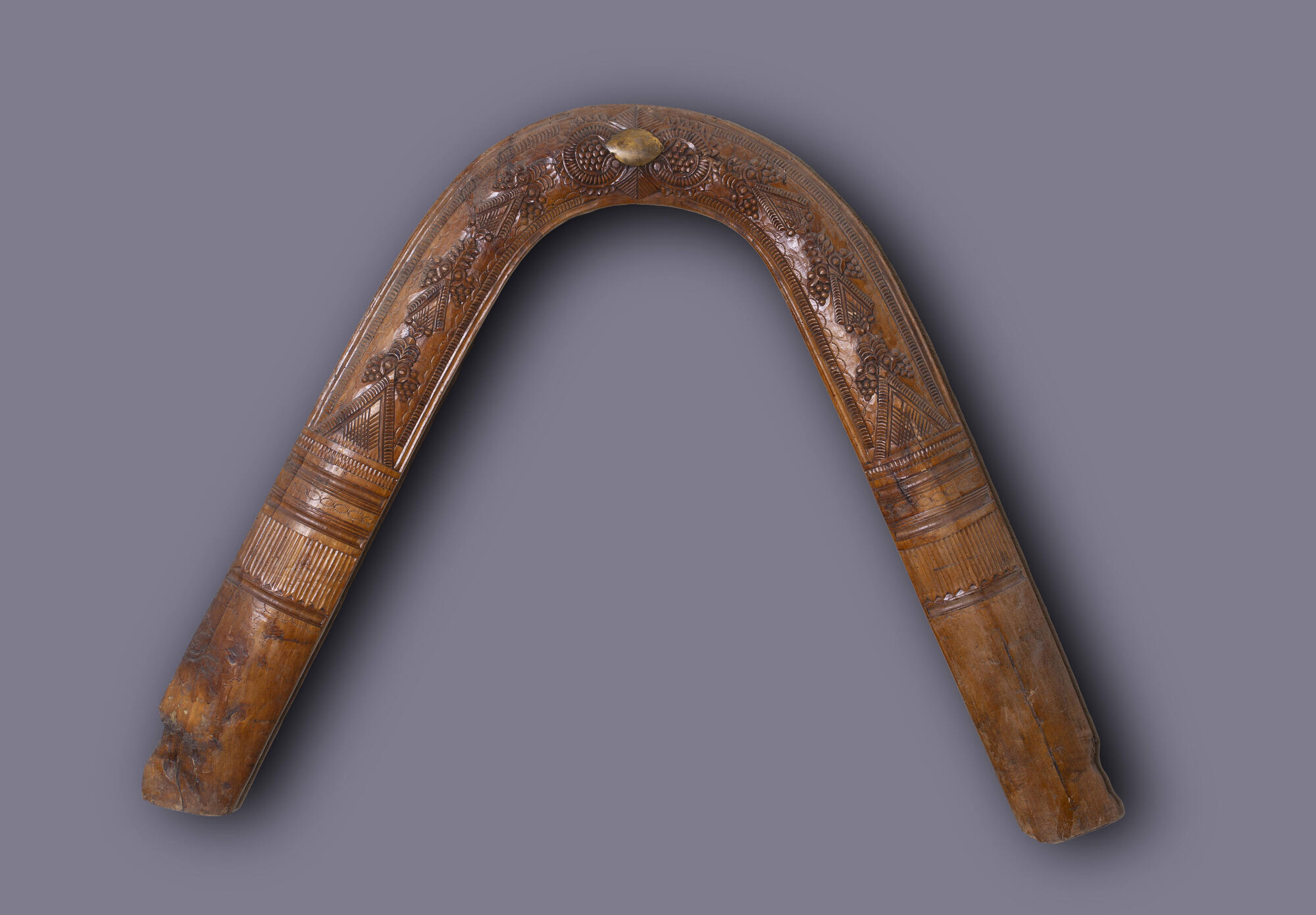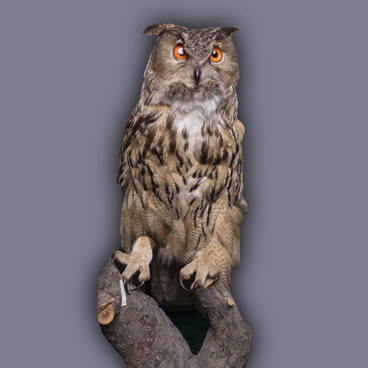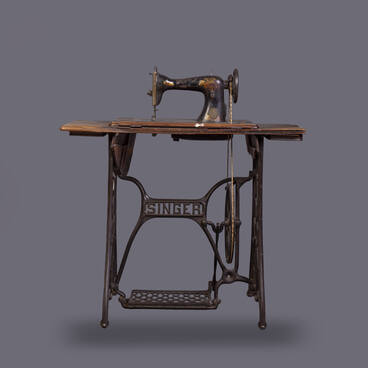The shaft bow is an important part of a horse harness along with shafts, bridle, collar, breeching, saddle, saddle girth, bellyband and reins. A shaft bow was needed to support the shafts and not injure the horse’s back and sides, it also served as a shock absorber. The shaft bow helps to maintain the balance of the load and distribute it evenly. The size of the shaft bow depends on the size of the horse and the size of the carriage.
Quality hardwood was used to make the shaft bow: birch, oak and hazel. The wood was sawn into blocks up to 2 meters long and up to 1.5 meters thick. Then the block was split into parts, which were blanks for future bows. The thickness of the blank was 8–12 cm and its length — 150–180 cm. The ends of the blank were hewn to shape the future bow, and then prepared for bending. To bend the wood well, but not to break it, it had to be steamed. This was done in different ways. One of them was to soak the tree in water for three days. Then boiling water was poured over the middle of the blank and left for 30 minutes. Once the future shaft bow was sufficiently steamed, the bending operation was commenced. A bending machine was used for this — a block with two notches arranged in parallel. The end of the bow was inserted into one of the notches and the steamed wood was gently bent. This was done slowly, without jerking. This work was tough, so usually two or three people bent the bow. This process lasted several hours. The protruding ends were tied together with strong twine or wire and left to dry.
The finished product was decorated. On holidays bells were suspended in the middle of the shaft bow.
In Starooskolsky uyezd, the shaft bow craft was developed in the village of Nizhnie Apochki in Znamenskaya volost. Merchants from Livny, Voronezh, Tula and Vyazma bought their products. Museum displays a shaft bow for a harness of the early 20th century. The bow is carved and was intended for going to the church or for riding on festive days. The item is decorated with a carved compound pattern consisting of overlapping rhombuses and sheaves, as well as circles.
Quality hardwood was used to make the shaft bow: birch, oak and hazel. The wood was sawn into blocks up to 2 meters long and up to 1.5 meters thick. Then the block was split into parts, which were blanks for future bows. The thickness of the blank was 8–12 cm and its length — 150–180 cm. The ends of the blank were hewn to shape the future bow, and then prepared for bending. To bend the wood well, but not to break it, it had to be steamed. This was done in different ways. One of them was to soak the tree in water for three days. Then boiling water was poured over the middle of the blank and left for 30 minutes. Once the future shaft bow was sufficiently steamed, the bending operation was commenced. A bending machine was used for this — a block with two notches arranged in parallel. The end of the bow was inserted into one of the notches and the steamed wood was gently bent. This was done slowly, without jerking. This work was tough, so usually two or three people bent the bow. This process lasted several hours. The protruding ends were tied together with strong twine or wire and left to dry.
The finished product was decorated. On holidays bells were suspended in the middle of the shaft bow.
In Starooskolsky uyezd, the shaft bow craft was developed in the village of Nizhnie Apochki in Znamenskaya volost. Merchants from Livny, Voronezh, Tula and Vyazma bought their products. Museum displays a shaft bow for a harness of the early 20th century. The bow is carved and was intended for going to the church or for riding on festive days. The item is decorated with a carved compound pattern consisting of overlapping rhombuses and sheaves, as well as circles.


